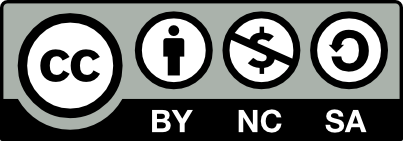Tunable viscoelastic collagen/polyethylene glycol composite hydrogels modulate neural and tumor cell behavior in 3D microenvironments

Three-dimensional (3D) cell culture systems provide a more physiological environment than traditional two-dimensional cultures by better mimicking the complex interactions within the extracellular matrix (ECM). Among the key properties of the ECM, viscoelasticity is essential for regulating cell behaviors, such as proliferation, differentiation, and migration. However, many present 3D culture systems are complex and technically demanding, which limits their broad application. In this study, we developed two hydrogel systems with identical stiffness but distinct viscoelastic properties, designed to serve as ECM-based 3D culture platforms. These hydrogels were constructed through the cross-linking reaction between type I collagen and functionalized polyethylene glycol derivatives, resulting in either reversible (dynamic) or stable (static) network structures. This platform effectively simulated ECM-like mechanical cues, enabling the investigation of viscoelastic effects on both neural and cancer cell responses. Our results demonstrated that dynamic hydrogels, characterized by rapid stress relaxation, enhanced PC12 cell elongation, promoted neural stem cell differentiation, and significantly facilitated the invasiveness and tumorigenic capacity of DU145 cells in vitro and in vivo. These findings highlight the critical importance of matrix viscoelasticity in modulating cell behavior and underscore the potential of this hydrogel-based system as a versatile and accessible tool for applications in neural tissue engineering, cancer research, and mechanobiology.
- Zhang Y, Wang Z, Sun Q, Li Q, Li S, Li X. Dynamic hydrogels with viscoelasticity and tunable stiffness for the regulation of cell behavior and fate. Materials (Basel). 2023;16:5161. doi: 10.3390/ma16145161
- Urbanczyk M, Layland SL, Schenke-Layland K. The role of extracellular matrix in biomechanics and its impact on bioengineering of cells and 3D tissues. Matrix Biol. 2020;85-86:1-14. doi: 10.1016/j.matbio.2019.11.005
- Watt FM, Huck WTS. Role of the extracellular matrix in regulating stem cell fate. Nat Rev Mol Cell Biol. 2013;14:467-473. doi: 10.1038/nrm3620
- Sun B. The mechanics of fibrillar collagen extracellular matrix. Cell Rep Phys Sci. 2021;2(8):100515. doi: 10.1016/j.xcrp.2021.100515
- Kim TH, An DB, Oh SH, Kang MK, Song HH, Lee JH. Creating stiffness gradient polyvinyl alcohol hydrogel using a simple gradual freezing-thawing method to investigate stem cell differentiation behaviours. Biomaterials. 2015;40:51-60. doi: 10.1016/j.biomaterials.2014.11.017
- Doyle AD, Sykora DJ, Pacheco GG, Kutys ML, Yamada KM. 3D mesenchymal cell migration is driven by anterior cellular contraction that generates an extracellular matrix prestrain. Dev Cell. 2021;56(6):826- 841.e4. doi: 10.1016/j.devcel.2021.02.017
- Pogoda K, Bucki R, Byfield FJ, et al. Soft substrates containing hyaluronan mimic the effects of increased stiffness on morphology, motility, and proliferation of glioma cells. Biomacromolecules. 2017;18(10):3040-3051. doi: 10.1021/acs.biomac.7b00324
- Huang X, Huang Z, Gao W, et al. Current advances in 3D dynamic cell culture systems. Gels. 2022;8(12):829. doi: 10.3390/gels8120829
- Urzì O, Gasparro R, Costanzo E, et al. Three-dimensional cell cultures: The bridge between in vitro and in vivo models. Int J Mol Sci. 2023;24(15):12046. doi: 10.3390/ijms241512046
- Ravi M, Paramesh V, Kaviya SR, Anuradha E, Solomon FDP. 3D cell culture systems: Advantages and applications. J Cell Physiol. 2015;230(1):16-26. doi: 10.1002/jcp.24683
- Duval K, Grover H, Han LH, et al. Modeling physiological events in 2D vs. 3D cell culture. Physiology (Bethesda). 2017;32:266-277. doi: 10.1152/physiol.00036.2016
- Knight E, Przyborski S. Advances in 3D cell culture technologies enabling tissue-like structures to be created in vitro. J Anat. 2015;227(6):746-756. doi: 10.1111/joa.12257
- Xue C, Chen L, Wang N, et al. Stimuli-responsive hydrogels for bone tissue engineering. Biomater Transl. 2024;5(3):257-273. doi: 10.12336/biomatertransl.2024.03.004
- Crandell P, Stowers R. Spatial and temporal control of 3D hydrogel viscoelasticity through phototuning. ACS Biomater Sci Eng. 2023;9(12):6860-6869. doi: 10.1021/acsbiomaterials.3c01099
- Lou J, Mooney DJ. Chemical strategies to engineer hydrogels for cell culture. Nat Rev Chem. 2022;6:726-744. doi: 10.1038/s41570-022-00420-7
- Wong SHD, Yin B, Li Z, et al. Mechanical manipulation of cancer cell tumourigenicity via heat shock protein signaling. Sci Adv. 2023;9(27):eadg9593. doi: 10.1126/sciadv.adg9593.
- Chaudhuri O, Cooper-White J, Janmey PA, Mooney DJ, Shenoy VB. Effects of extracellular matrix viscoelasticity on cellular behaviour. Nature. 2020;584:535-546. doi: 10.1038/s41586-020-2612-2
- Yang B, Wei K, Loebel C, et al. Enhanced mechanosensing of cells in synthetic 3D matrix with controlled biophysical dynamics. Nat Commun. 2021;12:3514. doi: 10.1038/s41467-021-23120-0
- Elosegui-Artola A, Gupta A, Najibi AJ, et al. Matrix viscoelasticity controls spatiotemporal tissue organization. Nat Mater. 2023;22:117-127. doi: 10.1038/s41563-022-01400-4
- Roth JG, Huang MS, Navarro RS, Akram JT, LeSavage BL, Heilshorn SC. Tunable hydrogel viscoelasticity modulates human neural maturation. Sci Adv. 2023;9(42):eadh8313. doi: 10.1126/sciadv.adh8313
- Lu Y, Chen C, Li H, et al. Visible light-responsive hydrogels for cellular dynamics and spatiotemporal viscoelastic regulation. Nat Commun. 2025;16:1365. doi: 10.1038/s41467-024-54880-0
- Duan Y, Mi X, Yu Q, et al. Tailored hydrogels for 3D bioprinting: Matching tissue viscoelasticity to enhance resident cell functionality. Adv Funct Mater. 2025:2503987. doi: 10.1002/adfm.202503987
- Gelse K, Pöschl E, Aigner T. Collagens-structure, function, and biosynthesis. Adv Drug Deliv Rev. 2003;55(12):1531-1546. doi: 10.1016/j.addr.2003.08.002
- Amirrah IN, Lokanathan Y, Zulkiflee I, Wee MFMR, Motta A, Fauzi MB. A comprehensive review on collagen type I development of biomaterials for tissue engineering: From biosynthesis to bioscaffold. Biomedicines. 2022;10(9):2307. doi: 10.3390/biomedicines10092307
- Sun Q, Hou Y, Chu Z, Wei Q. Soft overcomes the hard: Flexible materials adapt to cell adhesion to promote cell mechanotransduction. Bioact Mater. 2021;10:397-404. doi: 10.1016/j.bioactmat.2021.08.026
- He J, Su Y, Huang T, Jiang B, Wu F, Gu Z. Effects of material and surface functional group on collagen self-assembly and subsequent cell adhesion behaviours. Colloids Surf B Biointerfaces. 2014;116:303-308. doi: 10.1016/j.colsurfb.2014.01.009
- Wang Z, Ye Q, Yu S, Akhavan B. Poly ethylene glycol (PEG)-based hydrogels for drug delivery in cancer therapy: A comprehensive review. Adv Healthc Mater. 2023;12(18):2300105.doi: 10.1002/adhm.202300105
- Xu J, Liu Y, Hsu SH. Hydrogels based on Schiff base linkages for biomedical applications. Molecules. 2019;24(16):3005. doi: 10.3390/molecules24163005
- Fernandes-Cunha GM, Chen KM, Chen F, et al. In situ-forming collagen hydrogel crosslinked via multi-functional PEG as a matrix therapy for corneal defects. Sci Rep. 2020;10:16671. doi: 10.1038/s41598-020-72978-5
- Michida S, Chung UI, Katashima T. Probing the molecular mechanism of viscoelastic relaxation in transient networks. Gels. 2023;9(12):945. doi: 10.3390/gels9120945
- Jain D, Mattiassi S, Goh EL, Yim EKF. Extracellular matrix and biomimetic engineering microenvironment for neuronal differentiation. Neural Regen Res. 2020;15(4):573-585. doi: 10.4103/1673-5374.266907
- Salvi AM, Bays JL, Mackin SR, Mege RM, DeMali KA. Ankyrin G organizes membrane components to promote coupling of cell mechanics and glucose uptake. Nat Cell Biol. 2021;23:457-466. doi: 10.1038/s41556-021-00677-y
- Vieira MS, Santos AK, Vasconcellos R, et al. Neural stem cell differentiation into mature neurons: Mechanisms of regulation and biotechnological applications. Biotechnol Adv. 2018;36:1946-1970. doi: 10.1016/j.biotechadv.2018.08.002
- Huang L, Zhang L. Neural stem cell therapies and hypoxic-ischemic brain injury. Prog Neurobiol. 2019;173:1-17. doi: 10.1016/j.pneurobio.2018.05.004
- Tang S, Ma H, Tu HC, Wang HR, Lin PC, Anseth KS. Adaptable fast relaxing boronate-based hydrogels for probing cell-matrix interactions. Adv Sci. 2018;5(9):1800638. doi: 10.1002/advs.201800638
- Zhang J, Yang H, Abali BE, Li M, Xia Y, Haag R. Dynamic mechanics-modulated hydrogels to regulate the differentiation of stem-cell spheroids in soft microniches and modeling of the nonlinear behaviour. Small. 2019;15(30):e1901920. doi: 10.1002/smll.201901920
- Lehmann W, Mossmann D, Kleemann J, et al. ZEB1 turns into a transcriptional activator by interacting with YAP1 in aggressive cancer types. Nat Commun. 2016;7:10498. doi: 10.1038/ncomms10498
- Banyard J, Chung I, Migliozzi M, et al. Identification of genes regulating migration and invasion using a new model of metastatic prostate cancer. BMC Cancer. 2014;14:387. doi: 10.1186/1471-2407-14-387
- Darnel AD, Behmoaram E, Vollmer RT, et al. Fascin regulates prostate cancer cell invasion and is associated with metastasis and biochemical failure in prostate cancer. Clin Cancer Res. 2009;15(4):1376-1383. doi: 10.1158/1078-0432.ccr-08-1789
- Saito J, Onishi N, Yamasaki J, et al. Benzaldehyde suppresses epithelial-mesenchymal plasticity and overcomes treatment resistance in cancer by targeting the interaction of 14-3-3ζ with H3S28ph. Br J Cancer. 2025;133:27-39. doi: 10.1038/s41416-025-03006-4



